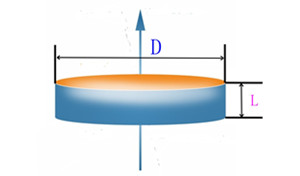What Is Length-to-diameter Ratio (L/D)?
We usually say the magnetic length/effective pole diameter (L/D) is not suitable when we explain to customers that the design of the size of a product is unreasonable. Now, let me explain what L/D is.
L/D is the ratio of the length of magnetization direction of a magnet (L) to the diameter of the magnetization surface (D). For NdFeB magnets, L/D is of important reference significance for the preliminary judgment of the temperature resistance of the magnet.
Under normal circumstances, we recommend an L/D of over 0.5 (preferably≥0.7).
L/D is calculated as follows:
(1)For instance, for a cylinder of D10*6 with a magnetization direction of 6, its L/D: 6/10=0.6. The L/D is very good. It has a very good high-temperature resistance.
(2)For instance, for a square of 15*15*3 with a magnetization direction of 3, its L/D: 3 / (2 * = 3 /16.92=0.17). The L/D is relatively small. It has a poor high-temperature resistance, which needs to be further improved.

Please consult our professional engineers for the selection of L/D of specific products.
Pre: What is the Magnetism of Ball Magnets like
Next: What is NeFeB Radial Ring







